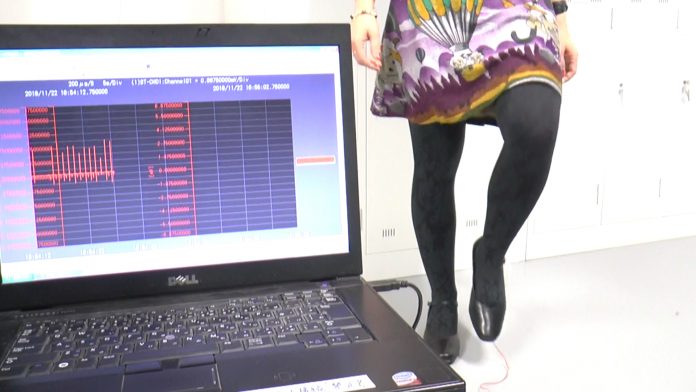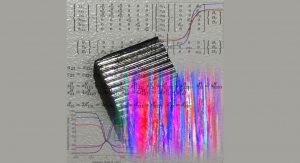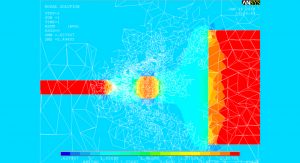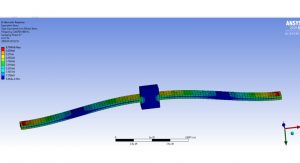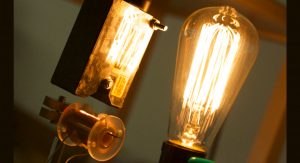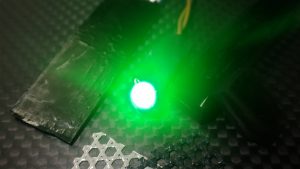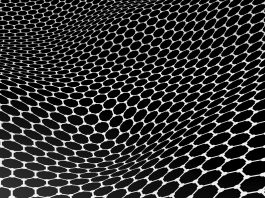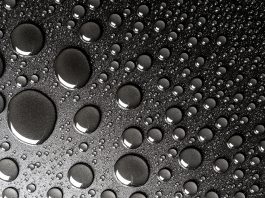Fumio Narita and Hiroki Kurita from Tohoku University, Japan, speaks to The Innovation Platform about developing new energy harvesting electromagnetic composite materials.
Internet of Things (IoT) connects everything to the internet and allows to change the business model in various fields. After placing sensors on the objects, the collected data contribute to improve both service efficiency and service quality, and create new values of conventional services via the internet.
Meanwhile, the number of sensors is expected to reach 1 trillion by 2030 and 45 trillion by 2033, respectively. Electric power is required for driving the sensors and communicating data, and when a battery is used for a trillion-level sensor, it poses a serious social problem in terms of environment, resources and cost. For this reason, energy harvesting for recovering power from unused energy (such as vibration, heat, light, and radio waves) widely existing in the natural environment has been gathering attention and is expected to be used as power for sensors driving and data communication.
What materials are candidates?
Piezoelectric ceramics, which are promising as energy harvesting materials, are brittle and insulators. Therefore, even if the output voltage due to vibration is large, the current is small and large power cannot be obtained. In addition, the lead zirconate titanate (PZT)-based piezoelectric ceramics that enable vibration power generation contain harmful substances (such as lead), and therefore the development of lead-free piezoelectric materials is important due to the environmental issues associated with this. From this point of view, barium titanate (BTO) or potassium sodium niobate (KNN) is expected to be a substitute for PZT for environmental protection because of its low-cost and stable supply of raw materials.
Are there any other candidate materials?
Tb-Dy-Fe alloy (Terfenol-D) exhibits giant magnetostrictive characteristics of approximately 1000-3000 ppm (ppm is 10-6). However, Terfenol-D is expensive and brittle, and causes the eddy current loss. On the other hand, Fe-Ga alloy (Galfenol) has a magnetostrictive property of about 300 ppm. However, it is important to note that the difficulty in production and processing is an obstacle to commercialisation. Recently in Japan, Tohoku Steel Co. developed Fe-Co magnetostrictive alloys, which exhibit high strength, ductility, and excellent workability, and can also be easily processed as a fibre.
Mechanics and design of piezoelectric and magnetostrictive composite materials (JSPS KAKENHI)
Energy harvesting materials have a lower output energy density than solar power generation in sunlight, and the current situation is that the energy conversion efficiency will deteriorate when harmful materials (such as Pb) or rare earth materials (for example Tb or Dy) are extracted and eliminated. For this reason, there is a demand for higher performance by controlling the structures and interfaces of piezoelectric and magnetostrictive materials. However, the macro-behaviour depends on the micro/nano structures (such as the domain/polarisation, domain wall/magnetic pole, and crystal grain boundaries).
Therefore, it is necessary to elucidate the behaviour of electromagnetic composite materials in consideration of the interaction between different scales. Dr Fumio Narita, Professor of Tohoku University, has developed a technology to theoretically identify micro/nano-scale factors that govern the macro-behaviour for piezoelectric and magnetostrictive materials. Dr Hiroki Kurita, who led the team that developed a technology to control the micro/nano structures and fabricate the high performance electromagnetic composite materials, said: “We recently have obtained an outstanding energy harvesting performance when we combine piezoelectric ceramics and magnetostrictive Fe-based alloy. We believe that the micro/nano structural interaction between piezoelectric and magnetostrictive materials enhances the energy harvesting performance. Moreover, we highly expect that our current research realises the coil-less magnetostrictive-energy-harvesting composite materials by the combination of piezoelectric and magnetostrictive materials.”
Using the numerical simulation and microelectromechanical system (MEMS) technology, our students are challenging the development of high performance electromagnetic microgenerators.
Piezoelectric composites
Zhenjin Wang, Tohoku University President Fellowship and Doctoral Student in the Narita Lab said: “It is charming that the properties of the environmentally friendly lead-free piezoelectric materials can be increased by designing their structures. By designing the new structure of the material, we can develop the potential of flexible and tough piezoelectric energy harvesting composite materials.”
Yinli Wang, Master’s Student in the Narita Lab and Expert Teaching Assistant of the Graduate School of Environmental Studies, then said: “In order to clarify and control the macro-behaviour of these composite materials, it is necessary to model the piezoelectric composite materials and to establish the numerical methods based on the multi-scale finite element analysis.” In other words, we must clarify the relationship between micro/nano structures of piezoelectric composite materials and their material properties (such as elastic constant, piezoelectric coefficient, and permittivity).
Magnetostrictive composites
Dr Zhenjun Yang, who is JSPS Research Fellowship for Young Scientists, said: “Fe-Co based clad steel plates, developed our Lab and Tohoku steel Co. exhibit a large inverse magnetostrictive effect and have a function of the vibration power generation.” He also said: “Fe-Co fibre/Al-Si matrix composite materials will have good energy harvesting performance at high temperatures.”
We fabricated Fe-Co magnetostrictive fibre integrated shoes and revealed that these shoes are capable of generating 12 μJ from 10,000 steps of usual walking. Kenya Nakajima, Doctoral Student and Research Assistant in the Narita Lab, said: “We try to control the structures and interfaces of the magnetostrictive materials in order to boost the performance.”
One of our goals is to create the basic technology for maximising the energy conversion efficiency by using the mechanics of materials and to develop flexible and tough energy harvesting composite materials. Kenichi Katabira, JSPS Research Fellowship for Young Scientists and Doctoral Student in Narita Lab, explains: “Our hybrid carbon fibre reinforced polymer (CFRP) with Fe-Co fibres might be used as a stress sensor for structural health monitoring (SHM) in aerospace.”
International research center for multi-energy harvesting materials and devices to realise the IoT society (JSPS Core-to-Core)
In recent years, we were funded by JSPS Core-to-Core Program. This program brings together the world-class expertise of seven partners from three different countries: Tohoku University and Waseda University (Japan), University of Manchester, University of Chester and Aston University (United Kingdom), and Tsinghua University and Xi’an Jiaotong University (China).
Our mission is to establish an international collaborative network between the involved research groups from the seven different universities. The co-ordinator of the program, Narita, said: “We want to establish collaboration, exchange and visiting programs to foster doctoral students and young researchers who can be active in interdisciplinary fields that combine materials science, mechanical engineering, and electronic physics. The training of young researchers enables sustainable research on energy harvesting materials and devices.”
The knowledge obtained through this project will enable us to propose the IoT systems that can be driven by harvesting thermal and kinetic energy generated in daily life such as walking, as well as in the automotive, aerospace and sports fields, whilst also having an impact on society.
Fumio Narita
Professor
Hiroki Kurita
Assistant Professor
Department of Frontier Sciences for Advanced Environment, Graduate School of Environmental Studies
Tohoku University
+81 22 795 7342
narita@material.tohoku.ac.jp
www.material.tohoku.ac.jp/~fukugo/en
Please note, this article will also appear in the second edition of our new quarterly publication.

